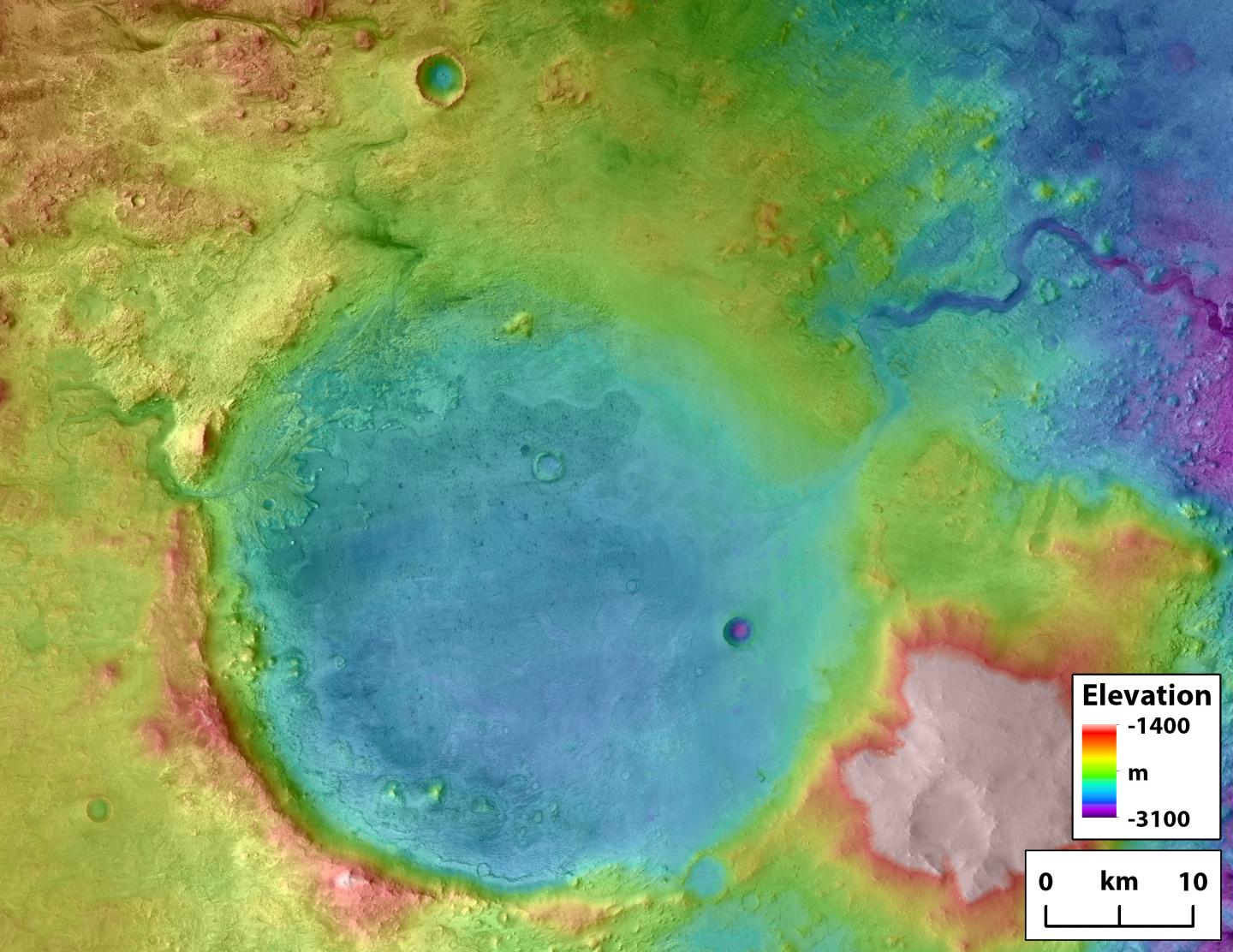Mars is currently a barren world of ice and dirt, but at one time catastrophic “megafloods” of water carved massive canyons across the surface of the red planet.
Some 3.7 billion years ago, when Mars was warmer and wetter, there were likely hundreds of lakes and rivers on its surface that may have supported favorable conditions for life. These bodies of water are long gone, but they carved permanent features into the Martian landscape, called paleolakes and paleochannels, that scientists can study for clues about the watery Mars of the past.
Videos by VICE
Now, scientists have discovered that some of these ancient lakes burst through their crater basins, causing outburst floods, also known as megafloods, which carved out wide canyons within a few weeks. The new finding, published on Friday in Geology, confirms that these flood features, called outlet canyons, were formed on very short timescales, and were a major geological force in Mars’ first billion years as a planet.

Led by Tim Goudge, a postdoctoral researcher at the University of Texas at Austin, researchers studied 24 ancient crater paleolakes imaged in high resolution by NASA’s Mars Reconnaissance Orbiter. The paleolakes all had breaches punched through the side of their basins where water flowed into outlet canyons during Mars’ early days.
These Martian canyon patterns match existing models projecting the effects of sudden megafloods, and they also corresponded to real geological features on Earth. In particular, glacial lake outburst flows, like the Missoula Floods some 13,000 years ago, left behind similar features such as the Channeled Scablands in Washington state.
Where Mars’ lakes were confined in crater basins, Earth’s glacial lakes are contained within icy dams. Megafloods on both planets occur when these structures are breached or overflow, forming similar outlet canyons.
Read More: There’s Enough Ice Water On Mars to Fill Lake Superior
“Given the large size of many paleolake outlet canyons on Mars, we hypothesize that lake overflow flooding was an important process for shaping the early Martian landscape,” the authors said in the study.
For years, scientists have been interested in landing rovers inside these paleolakes, because they are among the most likely locations to find fossils of ancient Martian life. Jezero Crater, a 30-mile-wide impact basin that was among the locations Goudge’s team studied, is on a shortlist of three landing sites that NASA is considering for its Mars 2020 rover.
Get six of our favorite Motherboard stories every day by signing up for our newsletter.
More
From VICE
-

Malte Mueller/Getty Images -

Malte Mueller/Getty Images -

-

Apple AirTag clipped to a backpack — Credit: Photo by James D. Morgan/Getty Images
